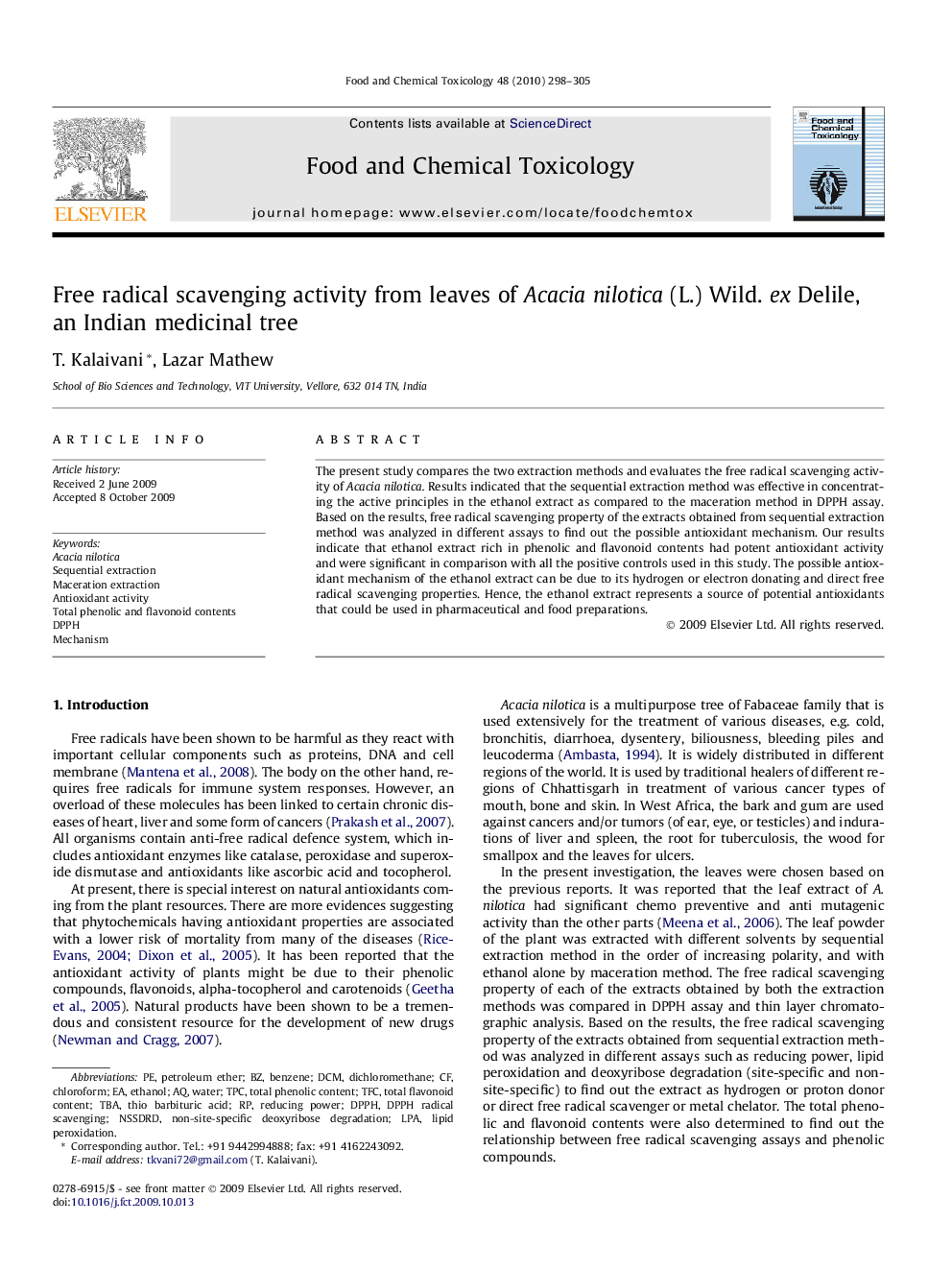| Article ID | Journal | Published Year | Pages | File Type |
|---|---|---|---|---|
| 2585862 | Food and Chemical Toxicology | 2010 | 8 Pages |
The present study compares the two extraction methods and evaluates the free radical scavenging activity of Acacia nilotica. Results indicated that the sequential extraction method was effective in concentrating the active principles in the ethanol extract as compared to the maceration method in DPPH assay. Based on the results, free radical scavenging property of the extracts obtained from sequential extraction method was analyzed in different assays to find out the possible antioxidant mechanism. Our results indicate that ethanol extract rich in phenolic and flavonoid contents had potent antioxidant activity and were significant in comparison with all the positive controls used in this study. The possible antioxidant mechanism of the ethanol extract can be due to its hydrogen or electron donating and direct free radical scavenging properties. Hence, the ethanol extract represents a source of potential antioxidants that could be used in pharmaceutical and food preparations.
